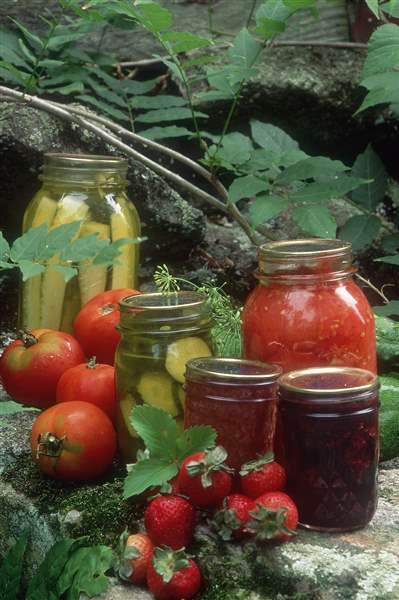
Time to plan for 2012’s harvest
9/17/2011
NW Ohio gardeners thinking about edible landscaping.
ASSOCIATED PRESS

It’s almost the time of year when many of us are harvesting the last of our homegrown produce for 2011.
Here it is the middle of September already, and it’s time to start planning next year’s garden. More and more gardeners in northwest Ohio are considering edible landscaping which incorporates fruits, vegetables, and nuts into typical landscaping plans.
Edible landscaping offers an alternative to conventional residential landscapes that are designed solely for ornamental purposes. The edible versions can be just as attractive, yet produce fruits and vegetables for home use.
There are many reasons to incorporate edible plants into the residential landscape, including:
•The freshness and flavor of home-grown, fully ripened fruits and vegetables.
•Controlling the quantity and kind of pesticides and herbicides used on the foods you consume.
•Increasing the food security of your household.
•To save on grocery bills.
•Growing unusual varieties not available in stores
•To get outside, interact with the natural world, and have fun.
Edible landscaping is as old as gardening itself and has undergone a recent revival. Ancient Persian gardens combined edible and ornamental plants. Medieval monastic gardens included fruits, vegetables, flowers, and medicinal herbs. Plans for 19th century English suburban yards, which modeled themselves after country estates, often included fruits, and berries.
The edible components of residential landscapes largely were lost in this country to shade trees, lawns, and foundation plantings. In the past two decades, however, there has been a revival of interest in edible landscaping.
Like all plants used in the landscape, edible plants grow best in certain conditions. Many (but not all) fruits and vegetables do best where they receive at least six hours of full sunlight a day. Most also like well-drained soil. Parts of your yard that satisfy these conditions are good places to start an edible landscape.
To start simply, consider a one-for-one substitution. Where you might have planted a shade tree, plant a fruit tree. Where you need a deciduous shrub, plant a currant or hazelnut. Where you have always had chrysanthemums, plant bachelor’s buttons—you can eat them.
Edible plants come in nearly all shapes and sizes and can perform the same landscape functions as ornamental plants.
Many common ornamental plants can survive with minimal care. Most edible plants, however, require a certain amount of attention to produce well. They might require a little extra watering, pruning, fertilizing, or pest management. The time required, however, need not be exorbitant.
To care for a fruit tree, for instance, might take only a few hours a year, while the yield could be enormous. It is best to treat edible landscaping as a hobby and not a chore. You might find yourself checking on your plants more than required, just because you want to see how they’re doing. If you are concerned about being overwhelmed, just start small.
The possibilities for edible landscaping are endless. By incorporating just one—or many—edible plants into a home landscape, you can develop a new relationship with your yard and the food you eat.
Lee Esterly Richter is a program assistant with OSU Extension Lucas County. If you have questions, call the OSU Extension Master Gardener Volunteer Horticultural Hotline at 419-578-6783. Volunteers are on hand Monday, Wednesday, and Friday from 10 a.m. to 1 p.m. Questions also may be emailed to mghotline @ag.osu.edu and possibly answered in a future Plant to Plate column.